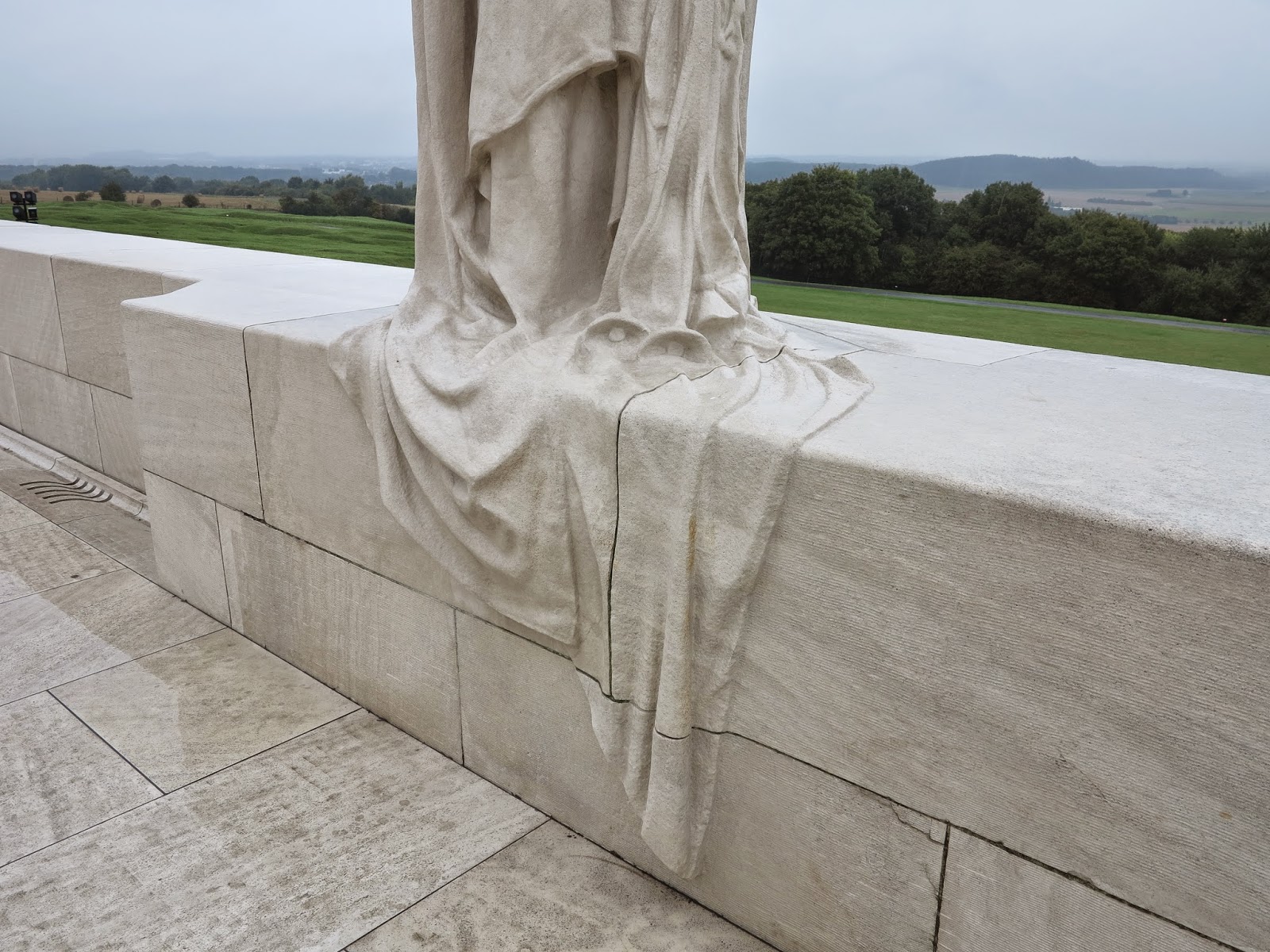Lutyens’ Memorial to the Missing of the Somme at Thiepval in France is one of the great works of interwar British architecture, and along with other sites such as the Menin Gate at Ypres (by the less highly regarded Blomfield, but here as good as Lutyens) and Herbert Baker’s Tyne Cot cemetery, makes a tour of the Great War battlefields of France and Belgium a worthwhile architectural pilgrimage, whatever other reasons one might have to visit.
The architect Adolf Loos claimed that 'Only a very small part of architecture belongs to art: the tomb and the monument. Everything else that fulfils a function is to be excluded from the domain of art.' Loos was an interesting architect and writer but I suspect
Lutyens, a man of fewer public words, was smarter. At
first glance one might think of Thiepval, a sort of fractal version of a
triumphal arch, as an example of what Loos meant. But when one sees the extent of the panels
with the names of the 72,000 missing dead recorded, one can see it quite another
way, the multiple piers at the lowest level of the memorial maximising the wall surface to
provide the necessary surface area – a practical response to a brief, raised to
a higher plane. In architecture, that is the domain of art.
The Canadian memorial at Vimy Ridge, designed by Walter
Seymour Allward, is mentioned less often (and harder to convey in an amateur photograph) but it is more prominent and better
sited, and arguably as great a work of memorial design. This memorial and Lutyens’
at Thiepval share one of the qualities often found in the greatest works of art:
strangeness. Neither is really quite like anything else.
It is harder – it seems – to do memorials well today. Commissions exist, but most designers lack the skill or the will, and the mood of the times may be different. Maya Lin’s 1982 Vietnam memorial at Washington DC shares the power of the best of the First World War memorials but done with a modernist, more abstract sensibility, and is also popular; but it seems to be harder to reach these heights as the years go by, as evidenced, for example, by London's ludicrous ‘Animals in War’ memorial in Park Lane (inscribed, mawkishly, ‘they had no choice’ – true, but what about the human conscripts?).
In an age when the ephemeral and
the pop-up seem to reflect uncertain times, it is good to be reminded by the
memorials of Lutyens and his generation of the virtues of solidity and
permanence in design – and artistic quality. If a
monument has that quality – as we can see from all chapters of architectural
histories, starting at the beginning - then it will last beyond the time when
its purpose and those it commemorates have been forgotten – ars longa vita
brevis.







No comments:
Post a Comment